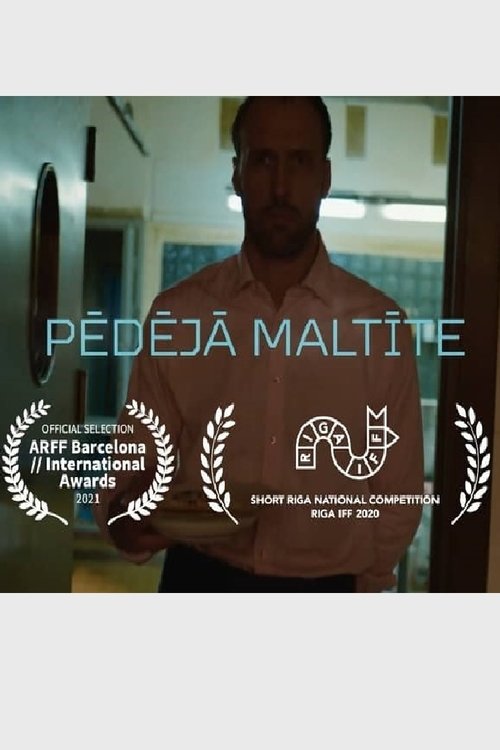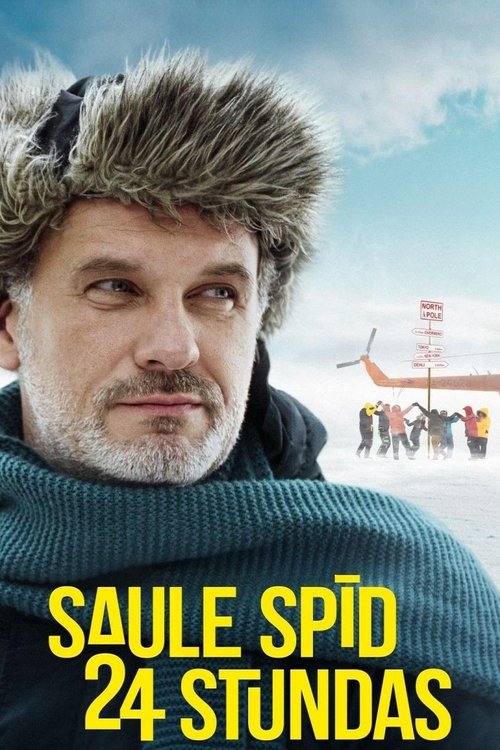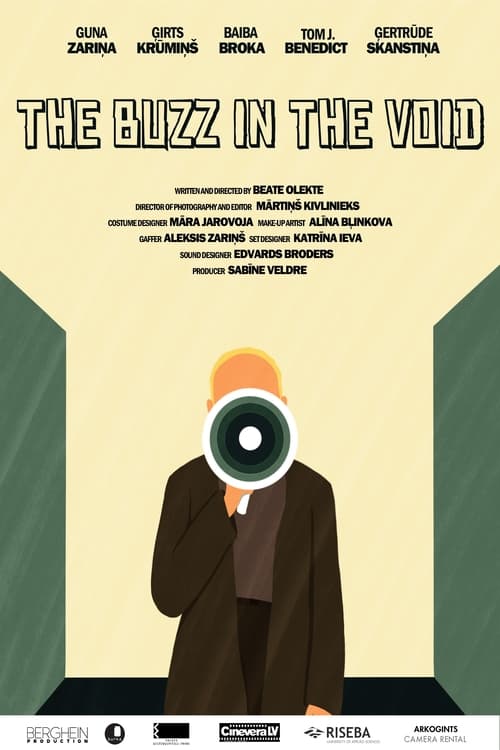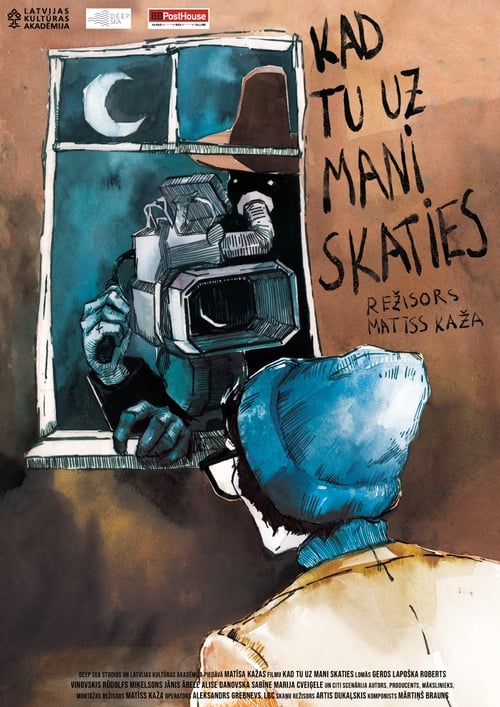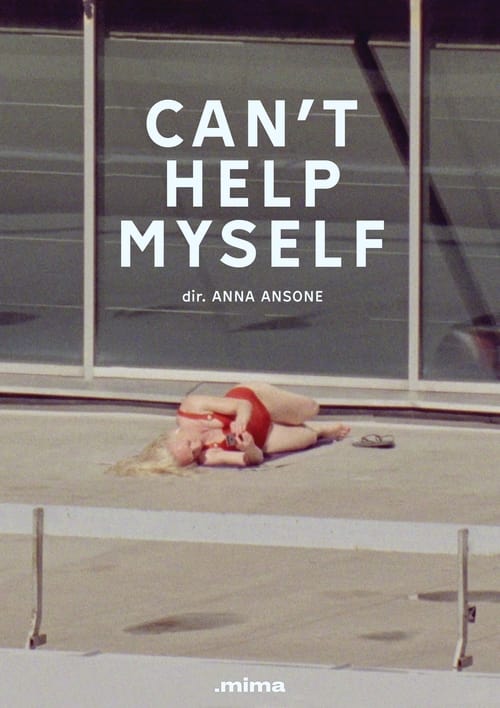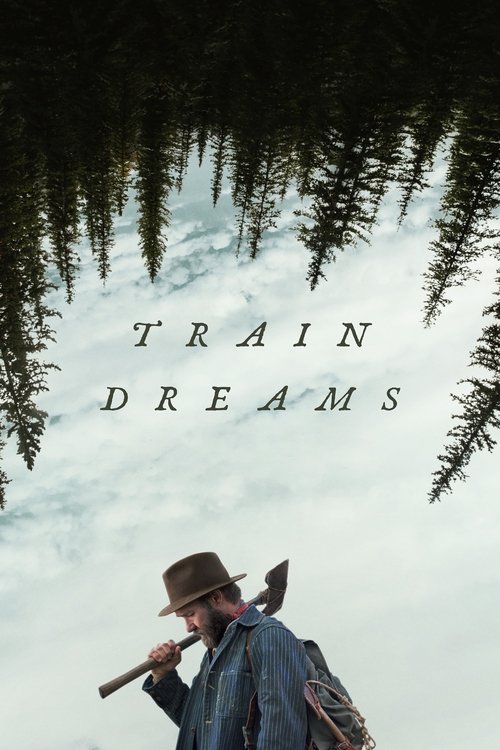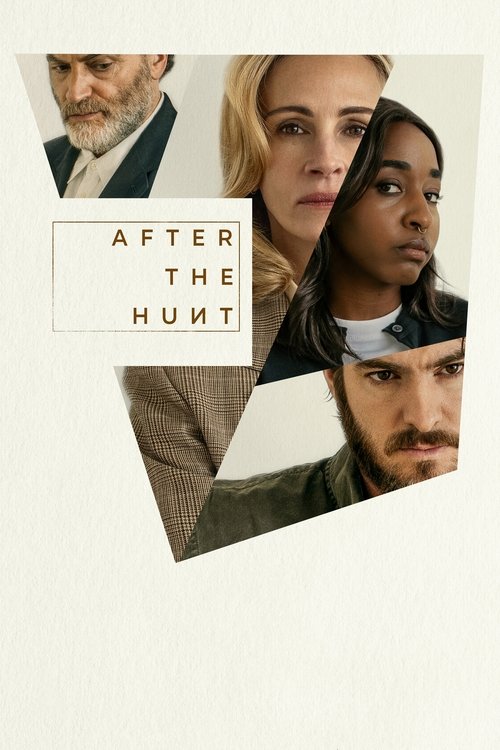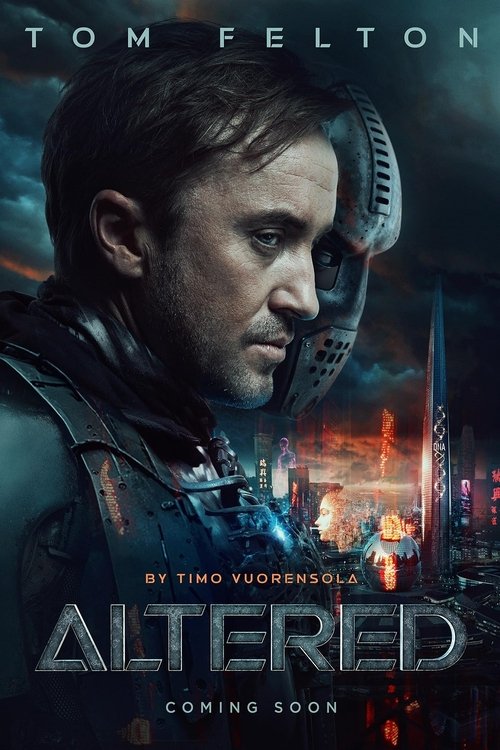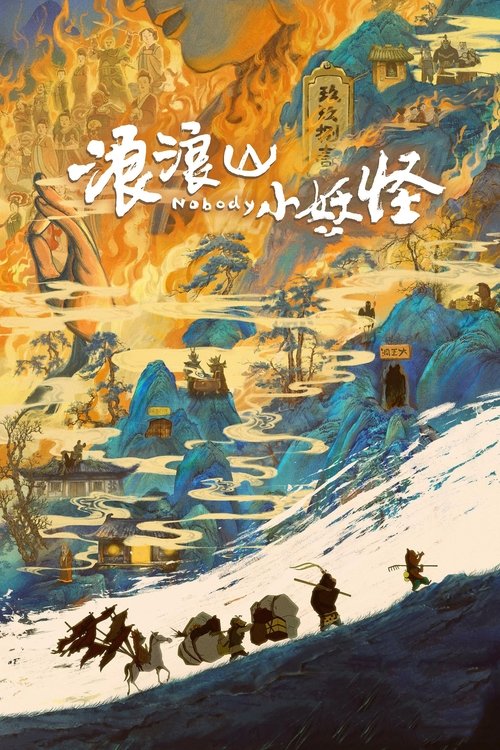
Ask Your Own Question
What is the plot?
Samuel arrives on a lonely road cutting through a dense, shadowed forest, the air thick with an eerie stillness. His voice-over narration begins, soft and reflective, introducing himself as a young man traveling to a foreign land in search of his long-lost father. The date and time remain vague, lending the story a timeless, almost fable-like quality. Samuel is visibly disoriented, unable to speak the local language, and his every step echoes his isolation. As he wanders, he stumbles upon a lost pig wandering the roadside, its small eyes wide with vulnerability. This encounter marks the beginning of his descent into captivity.
Shortly after, Kirke appears--a striking young woman with an ambiguous smile, searching desperately for the pig. She speaks to Samuel in a language he cannot understand but gestures warmly, inviting him to accompany her back to her family's farm. The farm, nestled deep in the woods, is a place where modern farming tools clash with a rustic, decaying environment. Kirke's hospitality feels genuine yet tinged with something darker, a subtle undercurrent of control masked by her charm.
Upon reaching the farm, Samuel meets Kirke's father, Gustavs, a stern, imposing man whose eyes hold a cold calculation. Alongside him is Jančuks, the farmhand, whose rough demeanor and jealous glances toward Kirke hint at simmering tensions. The farmhouse is a place of uneasy domesticity, where power struggles ripple beneath the surface. The pigsty, grim and filthy, lies just beyond--a dark enclosure where Samuel's fate will be sealed.
The morning after his arrival, Samuel awakens not in a guest room but stripped naked and chained by the neck inside the pigsty. The cold metal collar bites into his skin as he is forced to live among the pigs, a living symbol of his dehumanization. Gustavs and Jančuks enforce this brutal captivity with harsh discipline. Samuel is beaten when he resists or disobeys, his protests muffled by the grunts of the animals around him. The pig slop he is forced to eat is revolting, a physical manifestation of his degradation. The narrator's voice overlays these scenes with a morbid wryness, framing Samuel's ordeal as a dark fairy tale, a parable about captivity and loss of dignity.
Days blend into an indistinct stretch of labor and suffering. Samuel cleans the pigsty, feeds the animals, and endures the cold silence of his chains. His mind drifts to his father, the man he sought, whose absence leaves him rootless and alone. The farm itself is struggling financially; Gustavs contemplates selling pigs to survive, and even considers selling Samuel as a replacement for Jančuks, who is growing increasingly resentful of Samuel's presence. This commodification of human life alongside livestock underscores the farm's desperation and the brutal survivalist mentality that governs it.
One night, Jančuks, driven by jealousy over Kirke's obvious affection for Samuel, frees Samuel from his chains. Whispering urgently, Jančuks urges him to flee. They run through the dark fields under a sky heavy with stars, the tension crackling in the cold night air. But Kirke pursues them, her footsteps swift and determined. At the edge of the treeline, Jančuks confronts Kirke, their fight raw and fierce--words and blows exchanged in a desperate struggle for control and affection. Samuel, caught between them, reaches the forest's edge and freezes. The glowing eyes of wolves shimmer in the shadows, a primal threat looming. The piglet he once found might have chosen death over captivity, but Samuel's choice is different. He turns back, stepping into the fray to save Kirke from Jančuks' attack.
This act marks a turning point. Kirke's feelings for Samuel become clearer--her desire for a strong, loyal man to protect her and the farm is intertwined with a possessive, controlling love. She keeps him chained, beaten, and humiliated, yet claims to protect him from the dangers beyond the farm. Her contradictions reveal a complex character shaped by her own experiences, including mistreatment by Gustavs.
Samuel's attempts to escape continue. In one harrowing scene, he discovers a car hidden near the farm--a symbol of freedom and hope. His heart races as he imagines driving away from this nightmare. But Kirke betrays him, revealing his plan to Gustavs and Jančuks. His brief taste of hope is crushed, and he is dragged back into captivity, his spirit battered but not broken.
Throughout, the narrator's voice adds a layer of dark humor and allegory, describing Samuel's transformation from bewildered outsider to a man slipping into a feral, almost animalistic state. Samuel is seen on his knees, barking like a dog while dressed in formal attire--a disturbing image that underscores the themes of control and loss of humanity. Yet, beneath this, a flicker of Stockholm Syndrome emerges, a conflicted attachment to his captors born of isolation and survival instinct.
The farm's economic struggles deepen the sense of impending doom. Rival farmers arrive, inspecting Samuel as a potential replacement for Jančuks, but Gustavs refuses to sell. The power dynamics between the characters are fraught with jealousy, love, and desperation. Kirke's affection for Samuel clashes with Jančuks' jealousy, while Gustavs maintains a cold, pragmatic grip on the farm's future.
In the film's climax, Samuel faces his deepest internal conflict. Alone in the forest, confronted by the wolves once more, he must choose between the terrifying freedom of the wild and the grim security of captivity. The narrator reflects on Samuel's loneliness, emphasizing that to be completely alone in the world is, paradoxically, a form of freedom. Yet Samuel's choice is to return--to save Kirke from Jančuks' violent attack in the field, reaffirming their complex bond.
The final scenes unfold with a haunting ambiguity. Samuel, once a man searching for his father and freedom, remains chained in the pigsty, a prisoner of the farm and his own conflicted desires. The narrator's closing words linger: Samuel is "completely alone in the world," a tragic figure caught between lost past and grim present. The camera lingers on his chained form, the cold metal collar glinting in the dim light, as the sounds of the pigs and the forest blend into a somber symphony.
No character dies explicitly in the film; the threat of death is symbolized by the wolves and the harshness of the farm. The violence is psychological and physical but stops short of fatality, emphasizing the themes of captivity, control, and the human condition. The story closes on this unresolved note, a dark fairy tale about the price of survival, the hunger for belonging, and the blurred line between freedom and imprisonment.
What is the ending?
In the ending of "Squeal," the protagonist, a young man named Radu, confronts the dark realities of his situation. After a series of harrowing events, he faces the consequences of his choices and the violent world around him. The film concludes with a tense standoff that leaves Radu grappling with his fate, ultimately leading to a tragic resolution.
As the final act unfolds, Radu finds himself in a desolate, rural landscape, the remnants of a once vibrant life now overshadowed by despair. The air is thick with tension as he navigates through the remnants of his past, haunted by memories of his family and the choices that led him to this moment. The sun sets, casting long shadows that mirror the darkness enveloping his heart.
In a pivotal scene, Radu confronts the antagonist, a figure representing the oppressive forces that have shaped his life. The confrontation is charged with emotion, as Radu's fear and desperation clash with the cold, calculating demeanor of his adversary. The dialogue is sparse but loaded, each word a reflection of Radu's internal struggle. He is torn between the desire for revenge and the hope for redemption, a battle that plays out not just in his words but in his body language, the way he clenches his fists and shifts his weight.
As the standoff escalates, the tension reaches a boiling point. Radu's resolve is tested as he faces the reality of his situation. The antagonist taunts him, revealing the depths of the corruption and violence that have ensnared Radu's life. In a moment of clarity, Radu realizes that he cannot escape the cycle of violence that has defined his existence. This realization is palpable, a shift in his emotional state that is mirrored in the changing atmosphere around him.
The climax of the film is marked by a sudden eruption of violence. Radu, driven by a mix of fear and desperation, makes a fateful decision that seals his fate. The scene is chaotic, filled with the sounds of struggle and the visceral impact of the confrontation. As the dust settles, the consequences of Radu's actions become painfully clear. The camera lingers on his face, capturing the raw emotion of loss and regret as he grapples with the aftermath of his choices.
In the final moments, Radu is left alone, surrounded by the remnants of the conflict. The weight of his decisions hangs heavy in the air, and the silence is deafening. The film closes on a haunting note, leaving viewers with a sense of unresolved tension and the stark reality of Radu's fate. The screen fades to black, a poignant reminder of the struggles faced by those caught in a cycle of violence and despair.
The fates of the main characters are sealed in this tragic conclusion. Radu, once filled with hope and determination, is left to confront the consequences of his actions, a poignant reflection of the film's exploration of the human condition. The antagonist, representing the forces of oppression, remains a looming presence, a reminder of the darkness that continues to pervade Radu's world. The film ends without resolution, leaving the audience to ponder the complexities of choice, consequence, and the enduring impact of violence on the human spirit.
Is there a post-credit scene?
In the movie "Squeal," produced in 2022, there is indeed a post-credit scene that adds an intriguing layer to the film's narrative.
As the credits roll, the screen fades to black before transitioning to a dimly lit forest. The atmosphere is thick with tension, and the sounds of rustling leaves and distant animal calls create an eerie backdrop. The camera slowly pans down to reveal a small, hidden clearing where a group of individuals is gathered around a flickering campfire. Their faces are obscured by shadows, but their hushed voices can be heard discussing the events that transpired in the film.
One figure, slightly apart from the group, is seen sketching something in a notebook. The camera zooms in, revealing a detailed drawing of the main character, along with cryptic symbols and notes that hint at a deeper conspiracy. The figure looks up, their expression a mix of determination and fear, suggesting they are aware of the dangers that lie ahead.
As the scene unfolds, a sudden rustling in the bushes interrupts the conversation, causing the group to fall silent. The tension escalates as they exchange nervous glances, and the camera cuts to a close-up of the figure with the notebook, who appears to be both anxious and resolute. The scene ends abruptly with a loud snap of a twig, leaving the audience in suspense about what might emerge from the shadows.
This post-credit scene serves to deepen the mystery surrounding the film's themes of survival and the unknown, hinting at potential future conflicts and the ongoing repercussions of the characters' choices. It leaves viewers with a lingering sense of unease and curiosity, effectively setting the stage for possible sequels or further exploration of the story's universe.
What motivates the main character, a young man named Romain, to travel to the rural countryside?
Romain is driven by a desire to reconnect with his roots and to find a sense of belonging after feeling lost in the urban environment. His journey is fueled by a mix of nostalgia and the hope of discovering more about his family's past.
How does Romain's relationship with the local pig farmer, who is also his uncle, evolve throughout the film?
Initially, Romain feels a sense of estrangement from his uncle, who embodies the rural lifestyle that Romain has distanced himself from. As the story progresses, Romain's understanding of his uncle deepens, leading to moments of bonding over shared experiences and the harsh realities of farm life.
What role does the mysterious woman, who appears in Romain's dreams, play in his journey?
The mysterious woman symbolizes Romain's inner conflicts and desires. She represents both his longing for connection and the fears he harbors about his identity. Her appearances in his dreams serve as a catalyst for Romain to confront his past and the choices he must make.
How does the film depict the theme of isolation through Romain's experiences in the countryside?
Romain's isolation is portrayed through his initial struggles to communicate with the locals and his feelings of alienation from the rural community. The stark landscapes and the quietness of the countryside amplify his loneliness, contrasting sharply with the vibrant chaos of city life.
What significant event occurs during the pig slaughtering scene, and how does it impact Romain?
The pig slaughtering scene is a pivotal moment that forces Romain to confront the harsh realities of rural life and the cycle of life and death. Witnessing the brutality of the act deeply unsettles him, leading to a profound internal conflict about his values and the choices he must make regarding his future.
Is this family friendly?
"Squeal," produced in 2022, is not considered family-friendly. The film contains several potentially objectionable or upsetting scenes that may be distressing for children or sensitive viewers.
- Violence: There are scenes depicting physical confrontations and aggressive behavior, which may be unsettling.
- Animal Cruelty: The film includes themes of animal treatment that could be distressing to viewers, particularly those sensitive to such issues.
- Dark Themes: The narrative explores heavy themes such as betrayal, desperation, and survival, which may be emotionally intense.
- Strong Language: The dialogue features coarse language that may not be suitable for younger audiences.
- Intense Emotional Moments: Characters experience significant emotional turmoil, including fear and despair, which could be upsetting.
These elements contribute to the film's mature rating and make it more appropriate for adult audiences.








